Potřebujeme váš souhlas k využití jednotlivých dat, aby se vám mimo jiné mohly ukazovat informace týkající se vašich zájmů. Souhlas udělíte kliknutím na tlačítko „OK“.
ASTM E2764-11
Standard Practice for Uncertainty Assessment in the Context of Seized-Drug Analysis (Withdrawn 2020)
Automaticky přeložený název:
Standardní praktiky pro nejistoty hodnocení v kontextu zadržených-drogové analýzy
NORMA vydána dne 1.6.2011
Informace o normě:
Označení normy: ASTM E2764-11
Poznámka: NEPLATNÁ
Datum vydání normy: 1.6.2011
Kód zboží: NS-46000
Počet stran: 4
Přibližná hmotnost: 12 g (0.03 liber)
Země: Americká technická norma
Kategorie: Technické normy ASTM
Kategorie - podobné normy:
Anotace textu normy ASTM E2764-11 :
Keywords:
analytical error, confidence level, measurement uncertainty, method validation , quantitative measurements, sampling error, seized drugs, sources of uncertainty, uncertainty, uncertainty budget, ICS Number Code 11.120.10 (Medicaments)
Doplňující informace
| Significance and Use | ||||||||
|
Application of Uncertainty—Qualitative and quantitative analyses require different approaches, refer to the references for additional information. Analysts shall understand the limitations of qualitative and quantitative determinations and have tools to estimate a value for measurement uncertainty of relevant, but not necessarily all, numerical results. In this regard, efforts should be made to use the vocabulary, symbols, and formatting expressed in documents published by international standardizing organizations such as ISO and ASTM International. An understanding of uncertainty is fundamental to the interpretation and reporting of results. The term “uncertainty” does not imply doubt; rather, its consideration provides assurance that results and conclusions from methods and analytical schemes are fit for purpose. The concept of uncertainty shall be considered for both qualitative and quantitative results. Laboratory management shall ensure that uncertainty be addressed through the provision of training, procedures and documentation. Laboratory management should consider customer requirements, such as a request for qualitative versus quantitative determinations, which influence the assessment of uncertainty. The benefits of understanding and determining uncertainty in this context include: Enhancing confidence through increased understanding of results, Providing a mechanism to express the reliability of results, Enabling the laboratory management and customer to evaluate the fitness for purpose of results, Facilitating the identification of procedural limitations and providing a basis for improvement, and Complying with accreditation requirements. |
||||||||
| 1. Scope | ||||||||
|
1.1 This practice provides guidance on the concept of uncertainty and its application to the qualitative and quantitative analysis of seized drugs. In this context, uncertainty encompasses limitations of qualitative methods as well as numerical ranges as applied to quantitative analyses. 1.2 The values stated in SI units are to be regarded as standard. No other units of measurement are included in this standard. 1.3 This standard does not purport to address all of the safety concerns, if any, associated with its use. It is the responsibility of the user of this standard to establish appropriate safety and health practices and determine the applicability of regulatory limitations prior to use. |
||||||||
| 2. Referenced Documents | ||||||||
|
Podobné normy:
Historická
1.4.2014
Historická
15.12.2010
Historická
15.5.2009
Historická
1.8.2010
Historická
1.8.2013
Historická
1.2.2008


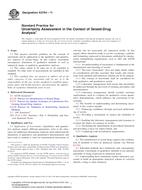
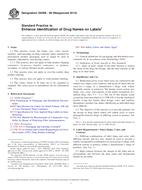 ASTM D6398-08(2014)..
ASTM D6398-08(2014)..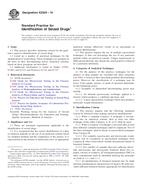 ASTM E2329-10
ASTM E2329-10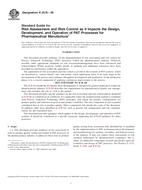 ASTM E2476-09
ASTM E2476-09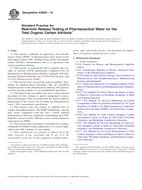 ASTM E2656-10
ASTM E2656-10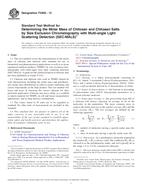 ASTM F2602-13
ASTM F2602-13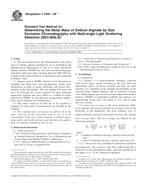 ASTM F2605-08e1
ASTM F2605-08e1
 Cookies
Cookies
